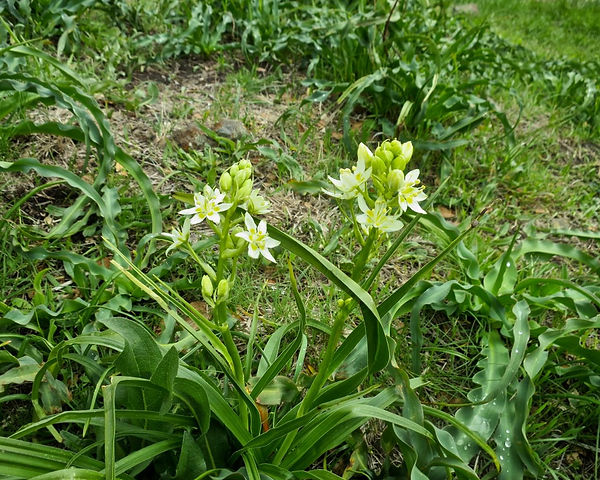
California Native Plant Society
in collaboration with East Bay Municipal Utility District
March 21, 2018
Dear Skyliners,
Rain today; in fact, we've had nearly 3 1/2 inches at Skyline in the last 7 days, which brings us to about 25 inches for the season. Yearly normal is 33 inches, so we're getting back in the game with more on the way.
Last week, we focused on hand weeding more thistles and Six-weeks or Rattail Fescue (F. myoros). These are now flowering and they set seeds quickly. On Sunday I think we'll bring up the weedeater and give them a haircut.
The overall goal this year is to prevent the invaders from setting seeds in our target areas. In the big picture, we're right on target for that. We're like a surfer who's caught the big wave and so far, so good. As long as we keep up the pace, we'll be fine.
We're cancelling today on account of rain, but Sunday looks good: so Siesta gate at 9:30. We could use lots of hands on deck so please let me know if you can make it.
New species - in the last two weeks, we've found two new native plant species. Both were found on the steep, southerly slope to the west of the big Bay Grove, looking down on the Tunnel. We had not explored there previously. Both are very unusual for the area and both are basically southern Californians who have been seen on Mt. D but not in the High Ridge Volcanic area between Tilden and Sibley.
Here's one of the little Sun Cups (Camissoniopsis micrantha):

This one is just coming in to flower. The leaf rosette is about four inches across, and the flower is about the size of the nail on your little finger. Sun Cups are members of the Evening Primrose family, along with other greats such as Clarkia, Calif Fuchsia, Evening Primrose, and Fireweed. Some of the Evening Primroses are night bloomers, but Sun Cups bloom by day. We've found several hundred of these plants in the area; most grow on bare (rabbit and rodent browsed) soil under Calif sage (Artemisia calif.) in the same area we find Fairy Mist (Pterostegia). We've also found them in the browse zone next to Coyote Bush.
The other new one is a Popcorn Flower (Cryptantha muricata - we think):

This one is just starting to bloom, and this plant is now about ten inches tall. This is a new species for me, but my guess is that in time, this one will be two feet tall with scores of flowers. We found just one patch of about 20 plants on a very steep outcrop below the Bay Grove. Up till now, this species is known in the East Bay from several spots on Mt. D, and in the Bay Hills at Miller Knox Park in Richmond and the Leona Heights area (south of Merritt College) in East Oakland. This is a really cool find and we hope there are more up there.
Speaking of Popcorn Flower, the more common species is really blooming like crazy along Diablo Bend. Here's a close up of the flowers:

Aren't these amazing flowers? This is Plagiobothrys nothofulvus, how's that for a tongue twister? I like to think of them as white Forget-me-nots.
The early bloomers are now hitting their stride at Skyline. Here's one of my very favorites, Biscuit Root (Lomatium utriculatum) which grows all along the spine of the Barberry crest:

The flowers are a clear, sulfur yellow and they just pop on a cloudy day. Each flower head has the trademark 'umbrella shape' that puts them in the Parsley family. They have very finely dissected foliage. These will bloom by the hundreds along the rocky crest of Barberry Ridge, but nearly always on the east side. In the summer they die down to a 'biscuit-like' tuber in the ground.
Star Lilies are now in full bloom. Here's a close up:

These are reputed to be poisonous, but still lovely. And here they are in mass:

This is along the Upper Terrace just before the Peak. In many places, you will find these by the ones and twos, but at Skyline, they are out by the hundreds. In two weeks time, many of these will already have faded and be over the hill. Now is the time to see them.
Lastly, Wooly Mules Ears are rolling out. On sunny, south slopes, a few have already dropped their petals and moved on to making seeds, as they should. (For them, the showy flowers are lipstick and perfume to attract the pollinators.) But in other places, they are just budding out. These will be in bloom in various spots for the next few weeks. Here's a close up with a little visitor:

This is yet another species of native Bumblebee, different from the Yellow-faced and Black-tailed ones we have already seen. Big prize waiting for the proper ID on this one.
Happy Trails,
Glen